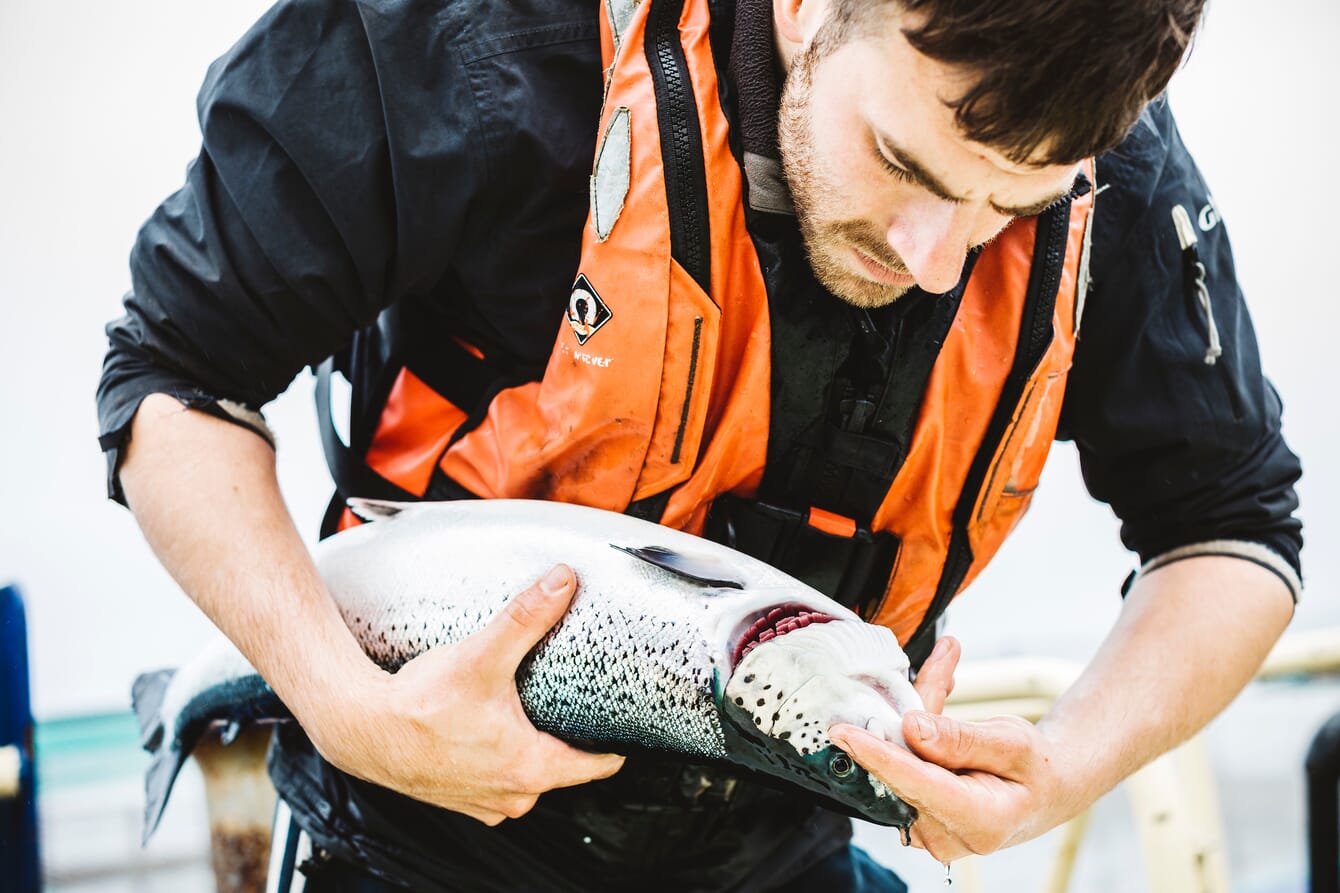
© Scottish Sea Farms
Scottish salmon farmers are concerned by the Scottish government’s decision to reduce the amount of emamectin benzoate, known commercially as Slice, which is widely administered as a prophylactic control against sea lice.
The decision follows a consultation on a new environmental quality standard (EQS), prompted by concerns that the treatment is harmful to crustaceans. It has been applied since March 2023 to new salmon farms or those that have been granted an increase in biomass.
However, the Scottish Government has now directed the Scottish Environment Protection Agency (SEPA) to implement the revised standard so that all farms will have to comply within 48 months.
While environmental campaigners say the four-year implementation period is too long, the salmon sector has questioned the scientific basis for making the changes in the first place.
Speaking to company newsletter, The Source, Scottish Sea Farms’ head of sustainability and development, Anne Anderson, said that the EQS had been set so low to protect freshwater insects, yet Slice is fed to the fish in a marine environment.
“What is the likelihood, if you think about the places where we’re farming, of a sediment which has emamectin benzoate present in it finding its way to a freshwater larvae?
“The whole sector’s average use of emamectin benzoate has been 42kg annually over the last five years – a small amount of medicine used to treat large numbers of fish. The seabed area of impact is very small, so the risk is small. This, and the absence of a likely pathway to the sensitive freshwater receptor, really questions the justification for what is, in real terms, a freshwater standard being imposed within the marine environment.
“In the wider context of sustainable water use, there is a lack of balance between SEPA wishing us to control lice more in their new framework and at the same time using an over-zealous precautionary principle to take away the only sea lice intervention with a minimal stress to the fish because it doesn’t require any handling.”
The Scottish government has acknowledged that the application of the new EQS is likely to reduce the number of treatments that can be made in a cycle.
Scottish Sea Farms’ head of veterinary services, Ronnie Soutar, said vets don’t want to be left without Slice in their medicinal toolbox.
“Slice, which has been around for 25 years, is such an important part of our lice control programme. We tend to prescribe it in the post-transfer to sea stage to try to delay and control the settlement of juvenile Lepeophtheirus lice.
“It’s also very important in managing the seasonal influx of Caligus lice that come from wild fish and can cause sudden, more severe lice damage to larger fish. It’s unlikely we’ll have enough consent to use it in those fish under the new rules and that worries me.
“If you want to see higher survival rates then don’t take away a vital medicine that supports survival.”




